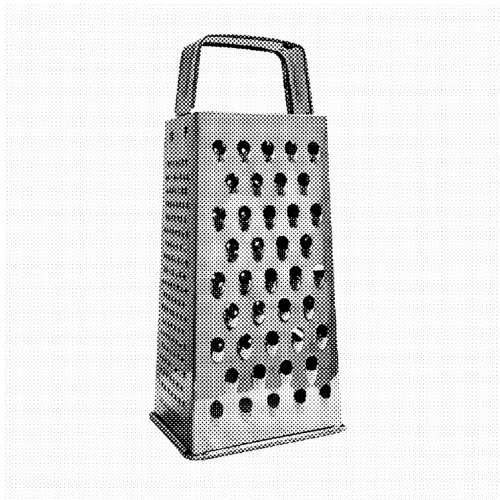The Cheese Grater .

The medical school application process is broken. In no way is this better exemplified than the secondary application process; or, as I like to think of it, the “cheese grater.”
Applying to medical school is done in multiple stages. The first stage is the primary application, which consists of sending essays (e.g., “why medicine?”), transcripts, and other demographic information to your list of chosen medical schools. After some bureaucratic wrangling by the AAMC — the “non-profit” behind this mess — medical schools send the secondary application to students who have sent their primary application.
The secondary application consists of, well, more essays. (Much to my chagrin, often the same information as the primary application.) The ostensible purpose is to allow schools a closer look at each applicant. For example, a common essay is “why us?” Schools will use this information to decide whether or not to send interview invites to students. Unfortunately, this seemingly-benign process has become an arduous process which I feel the need to complain about, as most people have little insight into this process.
Why it sucks
Terrible UI: Schools have portals to submit their essays. As someone with basic design experience, I am horrified by their websites. For example, here is how I was supposed to select prerequisite courses from one school:

The irony is that this was for an “engineering-focused” medical school. I guess they’re right; it’s “engineering” focused, not “design” focused!
Money: Each school requires a fee to submit a secondary. These fees range from $50 (e.g., Kaiser-Permanente) to $130 (e.g., Dartmouth). Thus, this step can cost thousands of dollars, just like the primary application. I can afford this because my chosen gap-year field, software engineering, is rather lucrative. However, for many people, this is not affordable, and one of the reasons why medical school is mostly for rich kids.
Time: Writing one 1,500-character essay is not too bad. However, doing 20 of them is a nightmare. To prevent this pain, it is recommended to “prewrite” your secondaries by looking up past secondary essay prompts online. Often, the essays will not deviate too much each year. Unfortunately, I did not have the wisdom to follow this advice, so my secondary season was just that — all of my time went into writing these essays. (Someone asked me what I did during the summer; I said “apply to medical school!")
Fortunately, there will be some common themes in the prompts for these essays — “what is a challenge you’ve overcome?", “how would you add to the diversity of the school?" — so it is possible to recycle material between schools. But nonetheless, during the peak of my secondary-writing season, I developed symptoms of carpal-tunnel syndrome, for the first time in my life.
Ghosting: After sending the most heartfelt and intimate essays, one must wait months to hear a response. And there is no way to track the status of your application. (Well, technically, there is. In the application portal, one can see that their application is “submitted.” In my case, for countless schools, I would see that my application was “under review” for months, and then wake up one day to a rejection email. An uncharitable intepretation of this would be that the Medical School Industrial Complex purposefully built a system to encourage hope, and then crush it.)
But you have to still do it
Applying to medical school is like rolling dice: it can appear arbitrary who is accepted and rejected. Moreover, I have no idea how the admissions committees will receive my application. So, the best strategy is to roll the dice as often as possible. The average number of applications last year was 18. I, a neurotic person, submitted my primary application to 41 schools and submitted secondaries to 28. (The difference between the two is the result of essay burnout, unwillingness to pay more in fees, and a realization that I did not meet some of the schools’ prerequisites).
How can we fix this?
Unfortunately, we can’t.
Fundamentally, there is a supply-and-demand problem here: there are more premeds than seats in medical schools. In 2021, for example, there were 62,443 applicants for 22,666 spots nationwide at M.D. institutions. And since each applicant applies to dozens of schools, each school has to screen out thousands of students. Thus, no matter the process chosen, the sieve must leave only a few remaining. It would be nice to reduce those secondary fees, but admissions departments rely on them. At any rate, secondaries are just one hurdle for those who want to wear a white coat.
I call the secondary process the “cheese grater” because you must take your identity and life history and shave off the aspects that medical schools want, collecting the remains in a neat essay to send. And, of course, it’s painful.
Recommended

Beware of the Man of Many Aphorisms
Empty arguments are worse than no arguments at all.

My favorite activity that I currently cannot do.

This is a dreadful activity.